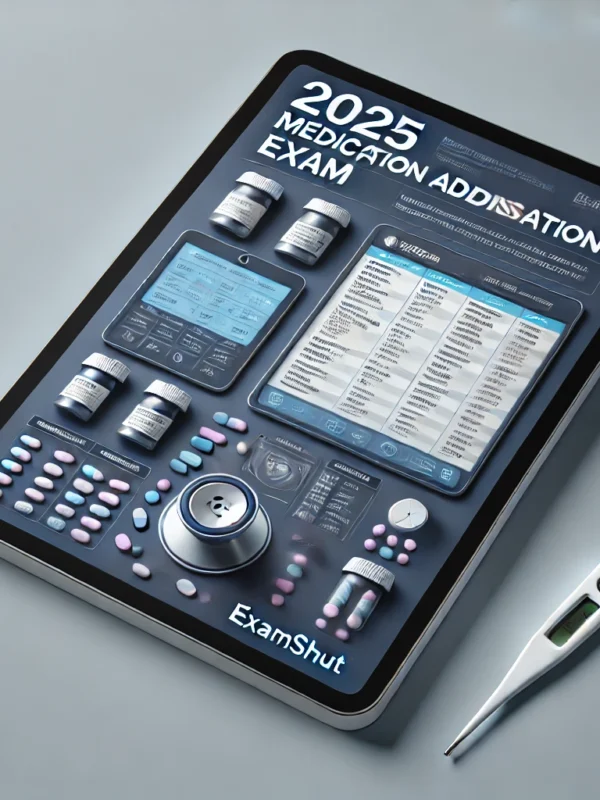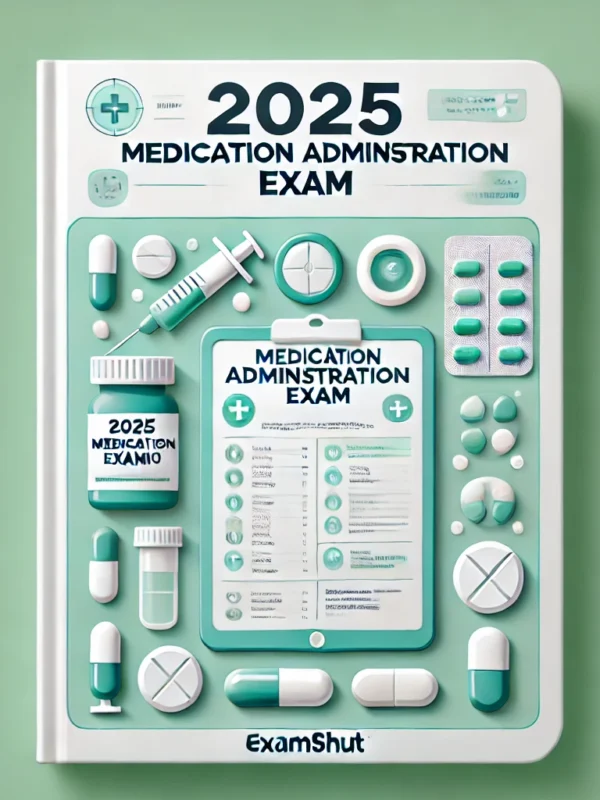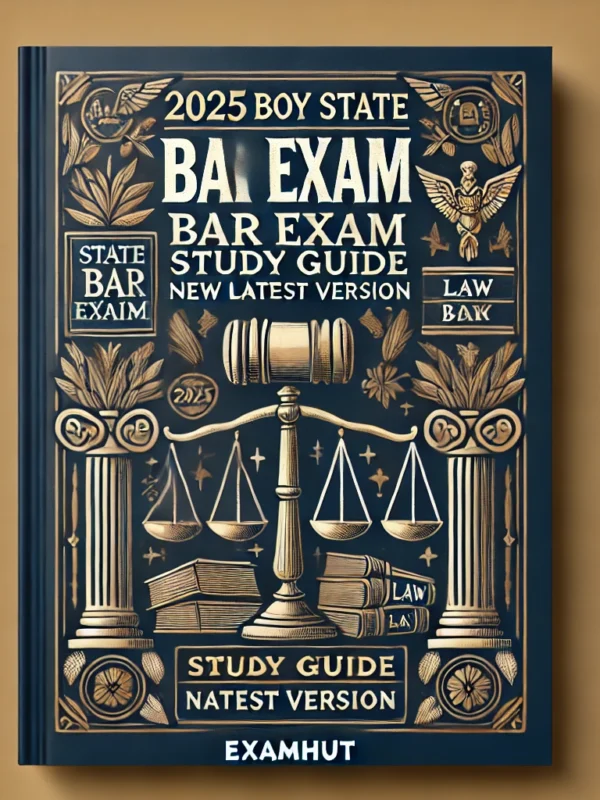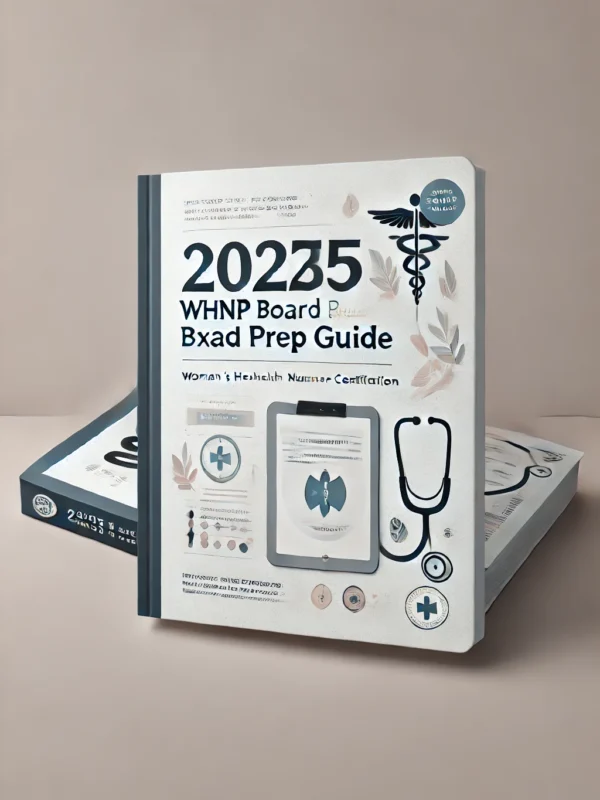Prepare with confidence for your Pediatric Advanced Life Support (PALS) certification with the PALS Final Exam 2025: Accurate & Verified Exam Questions with Detailed Answers for Guaranteed Pass – Graded A. This comprehensive study resource is designed for healthcare professionals, including nurses, doctors, and paramedics, aiming to pass the PALS Final Exam in 2025. It features a robust collection of real exam questions that cover critical PALS topics such as pediatric assessment, recognition and management of respiratory distress and failure, shock treatment, cardiac rhythm disturbances (e.g., bradycardia, tachycardia), pediatric resuscitation protocols, and post-resuscitation care. Each question is paired with detailed answers and in-depth rationales, providing clear explanations of complex concepts like pediatric airway management, fluid resuscitation, and the application of PALS algorithms in emergency scenarios. The PALS Final Exam typically includes 50 questions in multiple-choice and scenario-based formats, and this resource mirrors that structure to offer an authentic practice experience. Verified by certified PALS instructors and top-scoring candidates, this study guide guarantees a passing score through a structured, focused approach to preparation. Updated for 2025, it aligns with the latest American Heart Association (AHA) guidelines, ensuring you’re studying the most current protocols. With a proven track record—already graded A by successful candidates—this guide is the ultimate tool to help you achieve your PALS certification and excel in pediatric emergency care.
Preview
1. What is nystagmus?
A) Rapid blinking of the eyes
B) Involuntary eye movement
C) Painful eye movement
D) Difficulty focusing
Correct Answer: B) Involuntary eye movement
Rationale: Nystagmus refers to involuntary, repetitive eye movements that can be horizontal,
vertical, or rotary. It is commonly observed in neurological disorders.
2. What does PERRLA stand for when assessing for visual reflexes?
A) Pupils Equal, Regular, and Reactive to Light and Accommodation
B) Pupils Equal, Round, and Reactive to Light and Accommodation
C) Pupils Equal, Round, and Responsive to Light and Accommodation
D) Pupils Equal, Responsive, and Reactive to Light and Accommodation
Correct Answer: B) Pupils Equal, Round, and Reactive to Light and Accommodation
Rationale: PERRLA is a mnemonic used in physical assessments to assess pupil function. It
stands for “Pupils Equal, Round, and Reactive to Light and Accommodation.”
3. What type of light will we be observing in patients to assess PERRLA?
A) Ambient light
B) Direct, Consensual, and Accommodation light
C) Natural sunlight
D) Flashlight only
Correct Answer: B) Direct, Consensual, and Accommodation light
Rationale: PERRLA involves assessing the response of the pupils to direct light, consensual
light (when the other eye reacts), and accommodation (pupils constricting when focusing on a
near object).
4. What sinuses do we palpate when assessing a patient? (Select all that apply)
A) Frontal
B) Maxillary
C) Occipital
D) Temporal
Correct Answer: A) Frontal, B) Maxillary
Rationale: The frontal and maxillary sinuses are typically palpated during a sinus examination.
The ethmoid and sphenoid sinuses may also be assessed but are not typically palpated
directly.
A) Rapid blinking of the eyes
B) Involuntary eye movement
C) Painful eye movement
D) Difficulty focusing
Correct Answer: B) Involuntary eye movement
Rationale: Nystagmus refers to involuntary, repetitive eye movements that can be horizontal,
vertical, or rotary. It is commonly observed in neurological disorders.
2. What does PERRLA stand for when assessing for visual reflexes?
A) Pupils Equal, Regular, and Reactive to Light and Accommodation
B) Pupils Equal, Round, and Reactive to Light and Accommodation
C) Pupils Equal, Round, and Responsive to Light and Accommodation
D) Pupils Equal, Responsive, and Reactive to Light and Accommodation
Correct Answer: B) Pupils Equal, Round, and Reactive to Light and Accommodation
Rationale: PERRLA is a mnemonic used in physical assessments to assess pupil function. It
stands for “Pupils Equal, Round, and Reactive to Light and Accommodation.”
3. What type of light will we be observing in patients to assess PERRLA?
A) Ambient light
B) Direct, Consensual, and Accommodation light
C) Natural sunlight
D) Flashlight only
Correct Answer: B) Direct, Consensual, and Accommodation light
Rationale: PERRLA involves assessing the response of the pupils to direct light, consensual
light (when the other eye reacts), and accommodation (pupils constricting when focusing on a
near object).
4. What sinuses do we palpate when assessing a patient? (Select all that apply)
A) Frontal
B) Maxillary
C) Occipital
D) Temporal
Correct Answer: A) Frontal, B) Maxillary
Rationale: The frontal and maxillary sinuses are typically palpated during a sinus examination.
The ethmoid and sphenoid sinuses may also be assessed but are not typically palpated
directly.










Reviews
There are no reviews yet.